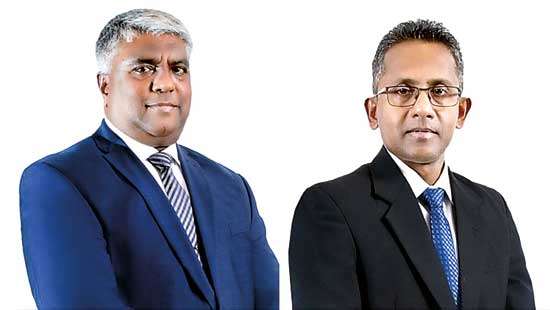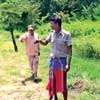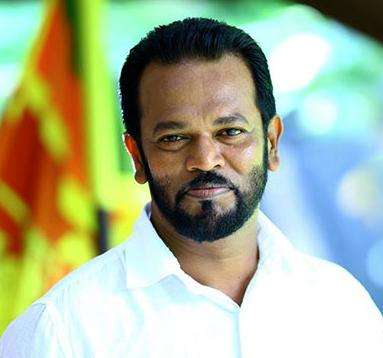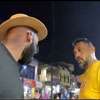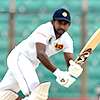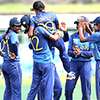By
D.B.S. Jeyaraj

‘Aadara Sevana’ (Abode of Love) in Anuradhapura is a social service cum prayer centre run by the Methodist Church in Sri Lanka. It is located a few kilometres away from the Anuradhapura town at a place called Kundichchaankulama in Sinhala and Kundichchaankulam in Tamil. The relatively-unknown Methodist Centre in the North Central Province has been in the news lately for extremely-troubling reasons. Aadara Sevana was the target of a mob attack on Sunday, April 14, celebrated worldwide by Christians as Palm Sunday. The mob comprising 20 to 25 youths had issued death threats, pelted stones and thrown firecrackers. They later locked the gates and held a tiny congregation of fifteen laity and two clergymen as virtual hostages for nearly two hours until police were summoned to rescue them.
It later became known that the Methodist Centre had been stoned earlier too. A mob had attacked the place with stones a fortnight ago on March 31. The mobs have been demanding that prayer services should not be conducted at the centre and that Christians from other areas should not be allowed to worship at this place. The Methodist Church has announced an hour-long ‘Silent Vigil’ from 2.00 to 3.00 p.m. on Galle Road opposite the Kollupitiya Methodist Church on Good Friday (April 19) to emphasise the right to religious freedom of Christians in Sri Lanka.
The Methodist Church of Sri Lanka is a Protestant Christian denomination that was established after the arrival in 1814 of five missionaries from Britain in the island known then as Ceylon. The Methodist Church in Sri Lanka has grown over a period of 203 years into an institution with some 32,000 members. It has 155 congregations and 95 pastors

The Methodist Church of Sri Lanka is a Protestant Christian denomination that was established after the arrival in 1814 of five missionaries from Britain in the island known then as Ceylon. The Methodist Church in Sri Lanka has grown over a period of 203 years into an institution with some 32,000 members. It has 155 congregations and 95 pastors. The head of Methodist Church is Rev. Asiri P. Perera. He was consecrated as the 12th President of the Methodist Conference in Sri Lanka on August 18, 2015. Methodists in Sri Lanka are roughly 55% Sinhala speaking and 45% Tamil speaking with a sprinkling of Burghers. With churches from Northern Point Pedro to Southern Dondra, the Methodist Church remains an exemplary embodiment of ethno-religious harmony.
In addition to keeping and spreading the faith, the Methodist Church has been engaging in many different community welfare and social service projects in various parts of Sri Lanka – Aadara Sevana in Anuradhapura was one of them. The Methodist Church purchased property consisting of a small house and 27 perches of land from a private owner in Kundichchaankulama 17 years ago. Aadara Sevana was set up one year later after alterations were made to the house. The Methodist Centre functioning for the last 16 years caters primarily to the differently-abled, disabled and hearing-impaired children and young adults. During weekdays, training classes and workshops are conducted for these persons with special needs in order to provide them greater access to prospective self–employment. Some self-employment projects are also implemented. Over 300 people registered with the centre have availed themselves of opportunities provided. There is also a small library and reading room. The centre is open to all persons regardless of ethnicity or religion. An overwhelming number of beneficiaries have been from Sinhala Buddhist families. On Sundays and on special occasions, a prayer service is conducted. The pastor/coordinator of the Methodist Centre is Rev. Dinuka Silva.
AADARA SEVANA (ABODE OF LOVE) METHODIST CENTRE
Although Aadara Sevana (Abode of Love) Methodist Centre has flourished in the neighbourhood for 16 years in a climate of peaceful co-existence, there had been (in recent times) deliberate attempts to foment friction by interested parties suspected of having vested interests. There have been covert and overt demands that the centre should stop its prayer services on Sundays and that persons from other areas should not come there to worship.
Objections were also raised that too much noise was emanating from the centre. Spearheading this campaign against the centre was an influential woman resident in the neighbourhood. When complaints were made about noise pollution, the Methodist Church responded promptly. Although the sound system at the centre was of very limited range and hardly a disturbance to the neighbourhood, it was deactivated voluntarily by church authorities in February in deference to the complaints raised by the woman resident.
The engineered opposition to the Methodist Centre however did not cease. It became more hostile and venomous. Congregation members on their way to attend services on Sunday were heckled and hooted at. Some were accosted and issued threats not to participate in prayer. It was first said that Sunday services should not be held but gradually the demands became more strident. There were outright demands that the Methodist Centre should be shutdown permanently. The people exerting such pressure on the Methodist parish were mainly youths from surrounding areas.
The woman and the youths causing problems to the functioning of Aadara Sevana apparently had the backing of a Pradeshiya Council member elected to office on the Sri Lanka Podujana Peramuna (SLPP) symbol of “Pohottuwa” or Lotus bud. The Pohottuwa local authority member named Nalin Siriwardene claimed to represent the area and its residents. He had told the residents that the now dissolved North-Central Provincial Council was planning to establish a development project providing employment to local youths in the vicinity and that the presence of the Methodist Centre was a hindrance. According to informed sources, no such development project had been envisaged in the area and in any case the Methodist Centre would not have been an obstruction. These sources suspected that some ‘commercial circles’ wanted to drive away the Methodists from the locality and utilise their property to set up a privately-owned manufacturing plant.
SLPP PRADESHIYA SABHA COUNCILLOR NALIN SIRIWARDENE
The continuous intimidation and threats caused many members of the Methodist congregation to gradually stop attending church through fear. Matters however came to a head on Sunday, March 31, when a group of youths, allegedly led by SLPP Pradeshiya Sabha Councillor Nalin Siriwardene, converged at the Aadara Sevana premises and warned pastor Rev. Dinuka Perera not to proceed with the Sunday service. The pastor however disregarded the threats and went ahead with the service. Thereafter, a barrage of stones rained on the centre premises while the Christian service was in progress.
After worship concluded and the congregation began to disperse, the church members were told that this was the last Sunday where a service could be held at the centre. If there were attempts to conduct services on a Sunday again there would be dire consequences the parishioners were warned. It was also reiterated that the Methodist Centre itself should be closed down or relocated. When Rev. Dinuka Perera lodged a complaint with the police and sought protection, he was told that no action could be taken because the people in the area did not want the services to be held. The pastor was strongly urged by the Khaki-clad guardians of law and order to refrain from conducting Sunday services without the sanction of the local residents.
As a result of the stone attack and consequent intimidation, Sunday service was not conducted at the Methodist Centre on April 7. This situation was communicated to the Methodist Church head Rev. Asiri Perera in Colombo. Rev. Perera in turn contacted a Senior Deputy Inspector General of Police and informed him of the problem. The Sri Lankan Methodist Church President told the high-ranking police officer that the following Sunday (14) was Palm Sunday and an important day for Christians. Traditionally, children go in procession to church with crosses made of palms in their hands singing ‘Hosannah.’ It was essential therefore that Palm Sunday worship be held at the Methodist Centre, stressed Rev. Asiri Perera. The Senior DIG in turn contacted police officers in Anuradhapura and ensured the holding of Sunday service at the Methodist Centre on April 14. With assurances given by the SDIG, Rev. Dinuka Perera went ahead with plans to conduct Palm Sunday service at the Methodist Centre. Rev. Dinuka Perera however found many of the congregation members hesitant to attend through fear. When this was told to Rev. Asiri Perera, the Methodist Church President felt he himself should personally go to Anuradhapura on Palm Sunday and participate in the service. Rev. Asiri Perera felt his going to Anuradhapura would be a source of moral support to the beleaguered congregation members and boost their morale. Rev. Perera went ahead as planned and arrived in Anuradhapura on April 14.
A very hostile reception awaited the Methodist Church President when he reached Aadara Sevana on Palm Sunday. Rev. Asiri Perera described to the Daily Mirror of April 18 what happened: “Palm Sunday was a glorious Sunday where we celebrated the triumphant entry of Jesus to Jerusalem as the King of all Kings. I approached this place unannounced having heard there had been a series of attacks whenever we had our worship in the past few weeks. The time was where those who were celebrating the Sinhala and Tamil New Year were keeping the Punya Kalaya which is the time assigned for religious observances. When I approached our centre my vehicle was surrounded by a gang of young people numbering 20 to 25, and as I disembarked from my vehicle I greeted them for the New Year. But their response was murderous threats as well as demands that I leave the place with my Methodist worshippers. I tried to negotiate with them and talk to them nicely, but the response I got was threats and demands, and they also blocked my way from entering the Methodist Church premises.”
DEATH THREATS, STONE PELTING AND FIRECRACKERS
Despite the threats and obstruction, Rev. Asiri Perera made his way into the centre and began conducting the service in association with pastor Rev. Dinuka Perera. As a result of the intimidation and threats only 15 people were present in the congregation. As the service progressed, the youth mob started shouting bloodcurdling death threats. Soon stones were pelted, firecrackers lit and hurled into the premises. This went on for about 45 minutes. The two clergymen however continued with the Sunday service. Calls were made to the Anuradhapura Police who were told of the unfolding crisis but there was no positive response.
After the service was over there was a fresh problem. The besieging mob had locked the gates from outside thereby preventing the laity and clergy from exiting the premises. The youths stood outside the compound hooting, jeering and occasionally pelting stones and lighting firecrackers. Once again, the local police were contacted by telephone but the police said they were understaffed due to the April New Year and could not come to the Methodist Centre. At this point of time, the Methodist Church head began contacting senior government officials in Colombo and informed them of their predicament. The Anuradhapura Police were pressurised into taking action by higher-ups.
Almost two hours later, the police arrived at the spot. They got the gates opened and escorted the forcibly-confined Methodists out. Members of the mob responsible for the attacks and lock-in continued to remain in the vicinity uttering horrible insults. When the Methodist clergymen complained to the police pointing out that those responsible for the attack were just standing there and implored the police to arrest them, the cops refused to take any action. The police said their instructions were only to provide safe escort to the church attendees and nothing more. They also said they could not keep on escorting people in and out of church and ‘advised’ that the Methodist Centre should stop their worship immediately.
The engineered opposition to the Methodist Centre however did not cease. It became more hostile and venomous. Congregation members on their way to attend services on Sunday were heckled and hooted at. Some were accosted and issued threats not to participate in prayer. It was first said that Sunday services should not be held but gradually the demands became more strident. There were outright demands that the Methodist Centre should be shutdown permanently. The people exerting such pressure on the Methodist parish were mainly youths from surrounding areas
Thereafter, Rev. Asiri Perera and Rev. Dinuka Perera went to the Anuradhapura police station and lodged a formal complaint about the attack and urged action against the culprits. They also gave a list of names of persons in the mob who were identified by members of the congregation. The police however were lukewarm in their response. Once again, the victims were advised to stop conducting services at the centre on Sundays.
Subsequently, a meeting was held at the Anuradhapura police station where church representatives were asked to be present at 10.00 a.m. by the headquarters inspector. When Rev. Perera and others went there, the HQI was absent. Only a sub-inspector of police was there to handle the matter. A delegation from the people in the area was led by local authority councillor Nalin Siriwardena of the SLPP. The Pohottuwa party Pradeshiya Sabha member proudly proclaimed that he was the leader and spokesman of the group that attacked the Methodist Centre. He was totally unapologetic and justified the attack. Mr. Siriwardene said the centre should stop its Sunday worship. It was also said that the presence of the Methodist Centre was a hindrance to a proposed development project. The police too sided with the attackers and showed no signs of arresting the miscreants. After hours of wrangling, Rev. Perera refused firmly to shutdown the Methodist Centre and walked out of the cop shop at 2.00 p.m. Still, the HQI was absent.
PATTERN OF ATTACKS ON CHRISTIAN PLACES OF WORSHIP
The attack on the Methodist Centre in Anuradhapura was not an isolated instance. It was very much a part of a general pattern of attacks on Christians and Christian places of worship that had been going on in Sri Lanka for several years. Anti-Christian attacks have been continuing from the days of Rajapaksa rule through the Yahapalanaya days of President Sirisena and Prime Minister Wickremesinghe. Christian institutions and places of worship have been targeted over the years, but there has been very little response from the powers to curtail these. Public outcry too has been negligible.
There are reasons for this perceived apathy. One is that most of these attacks occurred in the outstations and had no impact on Colombo. Secondly, many of the attacks were against Evangelical Christian groups and their places of worship. The national Christian evangelical alliance of Sri Lanka has been systematically documenting these incidents on an annual basis. They have for the greater part merely been treated as statistics. No positive action was taken. Furthermore, there was a state of denial by ruling regimes. When crusading lawyer Lakshan Dias drew attention to these attacks on Christian places of worship a few years ago in a TV discussion, the reaction by the then Justice Minister Wijeyadasa Rajapakshe was severe. He threatened Lakshan Dias of terrible consequences. Lakshan Dias had to undergo the harrowing experience of having to flee Sri Lanka in search of safety then.
After the service was over there was a fresh problem. The besieging mob had locked the gates from outside thereby preventing the laity and clergy from exiting the premises
Unlike the mainstream Christian churches, the evangelical Christian churches pursue the mission of spreading the Christian message and winning souls for salvation through Jesus Christ very diligently. Their methods of evangelizing have been criticised as too aggressive by non–Christian religious leaders as well as mainstream church leaders. Since many of the evangelicals are persons who have newly-embraced Jesus Christ, they possess the fierce zeal of religious converts. This is in stark contrast to the more complacent attitudes of traditional ‘old’ Christians of mainstream churches. A good number of the new entrants into Evangelical churches are members of mainstream churches themselves. Thus, there is sub-terranean resentment and even hostility towards Evangelical Christians by mainstream church leaders. So the hierarchies of the Catholic and protestant churches do not express solidarity when evangelical Christians are victimised. Due to these reasons, past attacks on Christian places of worship have not got the attention or reaction they ought to |
have received.
The attack on Aadara Sevana was somewhat different. Although located in Anuradhapura, it belonged to the mainstream Methodist Church. More importantly, the head of the Sri Lankan Methodist Church himself was caught up in the attack. The victims in most incidents in the past have been clergy or laity from outstations. Those directly affected were pastors or clergymen attached to local parishes or institutions. The Anuradhapura incident was perhaps the first instance in recent times where the head of a Christian denomination was a victim of an anti-Christian attack. Methodist Church President Rev. Asiri Perera got first-hand experience of undergoing intimidatory anti- Christian violence.
SRI LANKAN METHODIST CHURCH PRESIDENT
This crucial factor made a vast difference. Moreover, there was the unique personality of Rev. Asiri P. Perera. The Methodist Church in Sri Lanka has been traditionally Wesleyan and non-Episcopalian. The head of the church is called President and not Bishop or Archbishop as in the case of the Anglican Church. There have been efforts by some to change the designation of Methodist President to Bishop or Archbishop. But these proposals have been regularly voted down by the more tradition bound Methodists at their decisive annual conferences. However, some in the church felt that the nomenclature ‘President’ was causing confusion with Sri Lanka’s Executive President and therefore the Methodist head should be Bishop to denote the difference. This proposal was again defeated at the Methodist Conference but an alternative suggestion that whenever necessary the President could be referred to as Bishop so that those outside the church would know that he is the head of the Methodist Church was accepted. The head of the Methodist Church remains President but if necessary he could be referred to as Bishop.
After Rev. Asiri Perera became head of the Methodist Church in 2015, he has resorted to the practice of describing himself as President/Bishop in official communications. Besides, he is one of the rare Methodist clergymen in Sri Lanka who wear the cassock. He also wears a purple sash in the mode of Episcopalian Bishops. All this has caused some confusion and many sections of the media refer to Rev. Asiri Perera as Bishop whereas the head of the Methodist Church in Sri Lanka is officially President (this writer being a traditional Methodist of the old school has pointedly refrained from describing the Methodist Church head as Bishop).
It is however important to note that Rev. Asiri Perera is a dyed in the wool Methodist. Asiri hailing from the Methodist enclave of Moratuwa is the younger son of Methodist clergyman Rev. Theodore H. Perera who pioneered the ministry of healing in the Methodist Church. Asiri Perera is an old student of Richmond College, Galle and Carey College, Colombo. Heeding the divine call, he committed himself to the Christian ministry and entered the Theological College of Sri Lanka at Pilimathalawa in 1977. He obtained a Bachelor of Theology degree awarded by the Serampore University in India in 1981 and entered full-time ministry the same year. He was ordained as a Methodist pastor in 1984.
The PM held a meeting at Temple Trees in which Rev. Asiri Perera and IGP Pujith Jayasundara participated. Rev. Perera stated that Nalin Siriwardene was behind the attacks. The IGP promised prompt action to apprehend the culprits
The personality traits of Rev. Asiri Perera resulted in a situation where the Methodist Church head began combatting the unjust and illegal attack on a Methodist place of worship and the ignoble conduct of the police. He made an audio-visual statement in Sinhala about what had happened and posted it on YouTube and Facebook. He appealed publicly to the President, Prime Minister, opposition leader and the IGP to take immediate action. This has now gone viral.
Rev. Perera also contacted as many officials as possible and informed them of what had happened. He asked people to exert pressure on the government in this regard. Unlike in other incidents of anti-Christian violence, the Anuradhapura attack was picked up and publicised extensively via social media. This resulted in sections of the mainstream media also giving coverage to the incident. The fact that the head of a mainstream church had been subjected to such a gruelling experience coupled with Rev. Perera’s efforts to strive for justice provided widespread publicity to the incident.
The untiring efforts of Rev. Asiri Perera to publicise the attack on the Methodist Centre and expose the apathy bordering on antipathy displayed by the police met with great success. The incident was criticised widely on social media by right-thinking people from different ethnicities and religions. The extremist demand that people from other areas should not come here to worship was roundly condemned. People pointed out that if this ‘rule’ was adopted, Buddhists from other areas could not worship at Dalada Maligawa in Kandy or Ruwanwelisaya in Anuradhapura. Likewise, Hindus from other areas could not worship at Nallur, Koneswaram, Ketheeswaran or Nagukeshwaram. Also, Catholics from other areas could not worship at Madhu. The conduct of the police as well as government inaction were faulted by public opinion.
CONSTRUCTIVE ACTION BY PRIME MINISTER
With President Sirisena hopping from Thiruppathi to Singapore, it was left to Prime Minister Ranil Wickremesinghe to engage in constructive action. The premier held a meeting at Temple Trees in which the Methodist Church head Rev. Asiri Perera and IGP Pujith Jayasundara participated. Rev. Perera stated that a local authority member from the SLPP named Nalin Siriwardene was behind the attacks. The IGP promised prompt action to apprehend the culprits. He also promised police security for services at the Methodist Centre in the future. Thereafter, six persons allegedly involved in the attack on March 31 were produced before the Anuradhapura Magistrate and noticed to appear in court on May 2. No action has so far been taken against those responsible for the April 14 Palm Sunday attack.
Meanwhile, Rev. Asiri Perera announced that a silent vigil would be held opposite the Kollupitiya Methodist Church for an hour on Good Friday to draw attention to the attack in Anuradhapura. In a statement made to Daily Mirror, legal adviser to the Methodist Church, Ravindranath Dabare said the attackers had violated the Constitution and the Penal Code, while adding that the police had failed in their duty to uphold the law. “The attackers violated Article 14 of the Constitution which grants all citizens the freedom to practise a religion. The attackers also breached Sections 290 and 291 of the Penal Code, making their behaviour a criminal offence. So once a complaint is made under such circumstances, the police must arrest the suspects and present them in court,” he said. “Also, President Bishop Asiri Perera was forcibly kept under house arrest by the attackers, and he had to call the police to be freed. This amounts to unlawful restraint which is also a criminal offence. When the police arrived at the scene, they should have arrested the offenders, but they failed to do so.”
The law is clear on the alleged offences. It is the police that must take appropriate action against those allegedly responsible. It is the duty of the government to guarantee the rule of law and ensure freedom to all religions, particularly those from minority groupings. The Anuradhapura attack may very well have been ignored or swept under the carpet but for the fact that the head of a mainstream church was victimised. The refusal of Rev. Asiri Perera to accept injustice and his strenuous efforts to publicise the issue have resulted in some forward movement by the police on the matter. It is a damning indictment of Sri Lankan society that intensive initiatives have to be undertaken to get the law and order machinery moving in matters of this nature. Even now, we are not sure whether justice will ultimately prevail or not in the future. This truly is a tragic state of affairs!
D.B.S.Jeyaraj can e reached at dbsjeyaraj@yahoo.com





